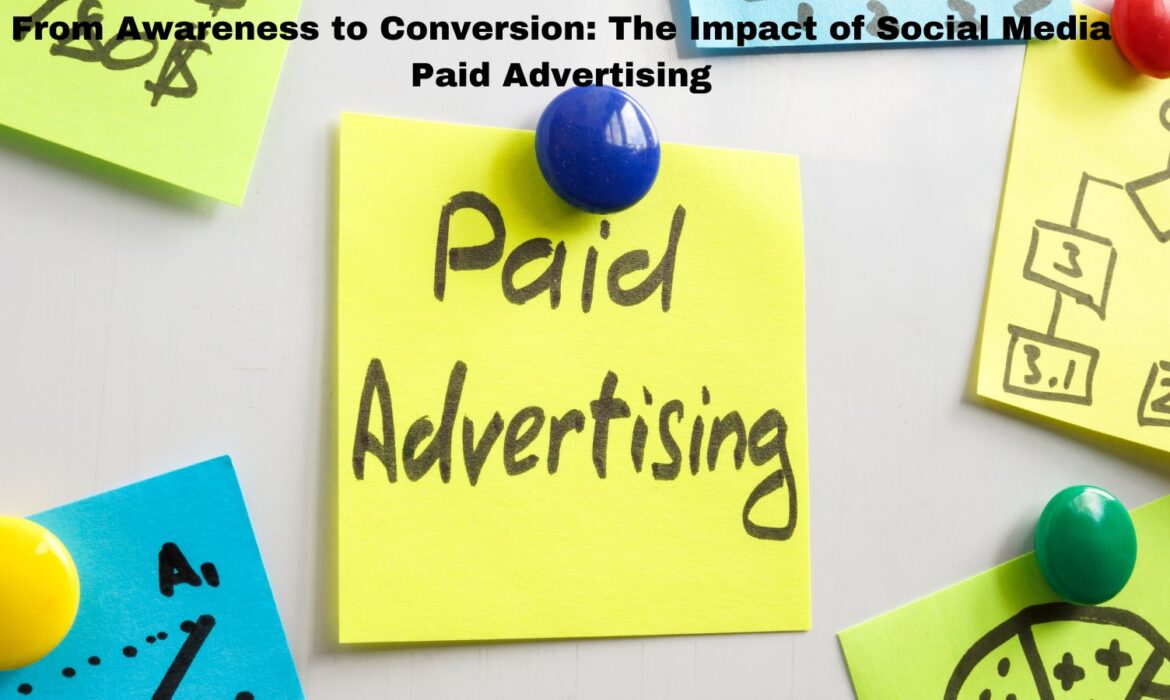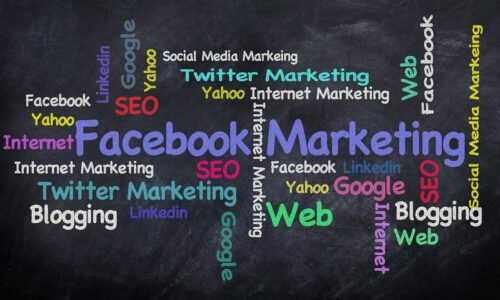
The Power of Social Media Advertising
In today’s digital landscape, social media advertising has become a powerful tool for businesses to connect with their target audiences and achieve their marketing goals. The impact of social media advertising cannot be underestimated, as it offers numerous benefits and advantages compared to traditional advertising methods.
Why Social Media Advertising Matters
Social media platforms have evolved from being simply a means of connecting with friends and family to becoming a hub for businesses to reach their customers. The importance of social media advertising lies in its ability to effectively target and engage specific audiences. With the rising use of social media among adults in the United States, it has become a critical channel for businesses to promote their products or services and grow their brand.
One of the key reasons why social media advertising matters is its unparalleled reach. Social media platforms like Facebook, Instagram, Twitter, LinkedIn, Pinterest, and YouTube have billions of active users, providing businesses with access to a vast audience that they can target based on demographics, interests, and behaviors. This level of granular targeting allows businesses to connect with their ideal customers and increase the visibility of their brand.
Furthermore, social media advertising offers a native advertising experience, meaning that the ads are seamlessly integrated into users’ news feeds. This makes them less interruptive and more engaging compared to traditional banner ads. Additionally, social media ads are often difficult to block with traditional ad-blocking software, ensuring that businesses can effectively deliver their message to their intended audience (source).
Benefits of Social Media Advertising
Social media advertising brings a multitude of benefits to businesses of all sizes. Here are some key advantages:
-
Increased Brand Awareness: Social media advertising helps businesses increase their brand visibility and reach a wide audience. By putting their brand in front of millions of people, businesses can stay fresh in consumers’ minds and build recognition (Common Ground Digital).
-
Precise Audience Targeting: Social media platforms provide sophisticated targeting options, allowing businesses to reach specific audiences based on demographics, interests, behaviors, and more. This precision targeting ensures that ads are shown to the most relevant audience, increasing the likelihood of conversions.
-
Cost-Effective: Compared to traditional advertising methods, social media advertising can be more cost-effective. Businesses have the ability to set their own budget and have control over how much they spend on each campaign. Additionally, the ability to track and measure campaign performance in real-time allows businesses to optimize their ad spend and achieve better ROI.
-
Engagement and Interaction: Social media platforms offer opportunities for direct engagement and interaction with the target audience. Businesses can respond to comments, messages, and reviews, fostering relationships and building customer loyalty.
-
Rich Analytics and Insights: Social media advertising provides businesses with detailed analytics and insights into the performance of their campaigns. Metrics such as reach, engagement, clicks, and conversions allow businesses to assess the effectiveness of their ads and make data-driven decisions to improve future campaigns.
By harnessing the power of social media advertising, businesses can effectively reach their target audience, increase brand awareness, drive engagement, and achieve their marketing goals. It is a dynamic and ever-evolving marketing strategy that continues to shape the digital landscape.
Social Media Platforms for Paid Advertising
To effectively reach and engage audiences, businesses turn to social media platforms for paid advertising. Each platform offers unique features and targeting options that can help businesses achieve their marketing goals. Let’s explore some of the major social media platforms for paid advertising.
Facebook Advertising
With over 2.7 billion monthly active users, Facebook remains the largest and most popular social media platform for paid advertising. It provides businesses with extensive targeting options, allowing them to reach specific demographics, interests, behaviors, and locations. Facebook offers various ad formats, including image ads, video ads, carousel ads, and more. Advertisers can also take advantage of Facebook’s advanced analytics and reporting tools to measure the performance of their campaigns (Fit Small Business).
Instagram Advertising
Owned by Facebook, Instagram has quickly gained popularity as a platform for visual storytelling and reaching a younger audience. With over 1 billion monthly active users, Instagram provides businesses with a visually engaging platform to showcase their products and services. Ad formats on Instagram include photo ads, video ads, carousel ads, and stories ads. The platform offers powerful targeting options based on demographics, interests, and behaviors, enabling businesses to connect with their desired audience (Fit Small Business).
Twitter Advertising
Twitter boasts over 330 million monthly active users and offers a unique platform for real-time conversations and news updates. It’s a great platform for businesses looking to engage with their audience in real-time. Twitter provides advertising options such as promoted tweets, promoted trends, and promoted accounts. These ad formats allow businesses to reach their target audience and increase visibility, especially during trending conversations and events.
LinkedIn Advertising
LinkedIn, with its network of over 700 million professionals, is an ideal platform for B2B advertising and reaching professionals in specific industries. It offers a variety of ad formats, including sponsored content, sponsored InMail, and text ads. LinkedIn’s powerful targeting options enable businesses to target audiences based on job titles, industries, company sizes, and more. This makes it an effective platform for reaching decision-makers and professionals looking for business solutions (Fit Small Business).
Pinterest Advertising
With over 400 million monthly active users, Pinterest is a popular platform for advertising products and driving traffic to e-commerce websites. Pinterest offers various ad formats, including standard pins, promoted pins, shopping ads, and video ads. Businesses can target users based on their interests, search behavior, and engagement with specific pins. This allows businesses to showcase their products and inspire users with creative and visually appealing content (Fit Small Business).
YouTube Advertising
As the largest video-sharing platform, YouTube provides businesses with an opportunity to engage with users through video ads. With billions of monthly active users, YouTube offers different ad formats, including skippable and non-skippable video ads, bumper ads, and sponsored cards. Businesses can target users based on their demographics, interests, and search behavior. YouTube’s vast reach and targeting options make it an effective platform for video advertising and reaching a global audience (Fit Small Business).
By leveraging the power of social media advertising on platforms like Facebook, Instagram, Twitter, LinkedIn, Pinterest, and YouTube, businesses can effectively reach their target audiences and achieve their marketing objectives. Each platform offers unique features and targeting capabilities, allowing businesses to tailor their advertising strategies to the specific needs of their target audience.
Key Statistics and Trends in Social Media Advertising
To understand the impact of social media paid advertising, it’s important to examine key statistics and trends in the industry. The following sections will delve into global social media usage and ad spend, the advantages of social media advertising, and a comparison of social media advertising to traditional advertising.
Global Social Media Usage and Ad Spend
Social media has become an integral part of people’s lives around the world. In January 2022, there were approximately 4.62 billion social media users, accounting for 58.4% of the global population (Bannerflow). This widespread usage presents a vast opportunity for businesses to connect with their target audience through social media platforms.
In terms of ad spend, social media advertising has experienced significant growth. Worldwide social media ad spend is projected to reach $173,988 million in 2022 and is expected to continue growing at a compound annual growth rate (CAGR) of 9.77% over the next four years. By 2026, the market volume is anticipated to reach $252,569 million. This upward trend highlights the increasing investment in social media advertising as businesses recognize its potential for reaching their target audience effectively.
Advantages of Social Media Advertising
Social media advertising offers numerous advantages over traditional advertising methods. One key advantage is its interactive nature, allowing the audience to engage with ads and enabling brands to measure key performance indicators (KPIs) and consumer sentiment. This interactivity makes it easier to optimize and improve ads based on audience feedback and preferences (Bannerflow).
Compared to traditional advertising, social media advertising is data-driven and relies on real-time data. This data-driven approach allows for more responsiveness and targeted advertising, as businesses can leverage insights and analytics to tailor their ads to specific audience segments. This ability to target specific demographics based on factors such as age, location, interests, and behavior is a significant advantage of social media advertising.
Furthermore, social media advertising is more cost-effective than traditional advertising. It offers better measurability, allowing for quick responses, message optimization, and real-time tracking, testing, and reporting. The lower cost per impression makes social media advertising an attractive option for businesses looking to maximize their marketing budget.
Comparing Social Media Advertising to Traditional Advertising
Social media advertising differs significantly from traditional advertising in several ways. Traditional advertising relies on general assessments from market research, while social media advertising is data-driven and relies on real-time data. This data-driven approach makes social media advertising more responsive, targeted, and measurable compared to traditional advertising methods.
In terms of cost-effectiveness, social media advertising offers a lower cost per impression compared to traditional marketing channels. This affordability allows businesses, especially small businesses, to reach a wider audience within their marketing budget. Additionally, social media platforms provide detailed analytics and insights, allowing businesses to track the performance of their ad campaigns and make data-driven adjustments to optimize their results.
Another advantage of social media advertising is its ability to influence consumer behavior. According to a survey, 76% of internet users in the United States have made a purchase influenced by a brand’s social media presence or advertising. This showcases the power of social media in driving consumer actions and highlights its effectiveness as a marketing tool.
In summary, social media advertising offers unique advantages over traditional advertising, including interactivity, targeting capabilities, cost-effectiveness, and the ability to influence consumer behavior. As social media usage continues to grow globally, businesses can leverage these advantages to maximize their reach and engagement with their target audience.
Strategies for Effective Social Media Advertising
To make the most of social media paid advertising, it’s essential to implement effective strategies that align with your marketing goals. Here are five key strategies for successful social media advertising:
Setting Advertising Goals
Before launching any social media advertising campaign, it’s crucial to define clear and measurable goals. Common objectives for social media advertising include increasing brand awareness, driving website traffic, generating leads, or boosting sales. By setting specific goals, you can tailor your ad content, targeting, and metrics to align with your desired outcomes. This focus allows for better evaluation of campaign success and optimization for future efforts.
Targeting the Right Audience
One of the significant advantages of social media advertising is the ability to reach a highly targeted audience. Effective targeting ensures that your ads are seen by individuals who are most likely to be interested in your products or services. Consider demographic factors such as age, location, gender, and interests when defining your target audience. Utilize the targeting options provided by each social media platform to narrow down your audience and increase the relevance of your ads. By reaching the right people, you can maximize the impact of your advertising efforts.
Creating Compelling Ad Content
In the fast-paced world of social media, captivating ad content is essential for grabbing users’ attention. Create visually appealing and engaging ads that align with the platform and resonate with your target audience. Tailor your messaging and visuals to evoke emotions, highlight unique selling points, or solve a problem for your audience. Utilize compelling headlines, eye-catching images or videos, and concise yet impactful copy to make your ads stand out. Remember, each social media platform has its own best practices and formats, so optimize your content accordingly.
Managing Ad Campaigns
Managing your social media ad campaigns involves continuous monitoring, optimization, and budget management. Regularly check campaign performance metrics to identify areas for improvement. Adjust targeting criteria, creative elements, or budget allocation based on real-time data. A/B testing can help you identify the most effective ad variations. Stay on top of industry trends and platform updates to take advantage of new features and ad formats that can enhance your campaigns. Consider utilizing social media scheduling tools to streamline your campaign management process and ensure consistent ad delivery.
Measuring Performance and Optimization
Measuring the performance of your social media ad campaigns is vital to gauge their success and make data-driven decisions. Track key metrics such as impressions, clicks, conversions, and return on investment (ROI) to assess the effectiveness of your ads. Use platform analytics tools or third-party social media analytics tools to gather and analyze data. Identify trends, patterns, and areas of improvement based on the performance insights. Optimize your campaigns by making data-driven adjustments to targeting, messaging, or creative elements. Continual optimization based on performance analysis helps you refine your approach and achieve better results.
By implementing these strategies, you can enhance the effectiveness of your social media advertising efforts and drive the desired outcomes for your business. Remember to stay up to date with the latest trends and best practices in social media advertising to stay ahead of the competition and make the most of this powerful marketing channel.
Successful Case Studies in Social Media Advertising
To understand the impact of social media advertising, let’s explore some successful case studies that demonstrate the power of effective campaigns.
Coca-Cola’s #ShareACoke Campaign
In 2014, Coca-Cola launched its #ShareACoke campaign, which became a global phenomenon. The campaign involved replacing the Coca-Cola logo on their bottles with popular names and encouraging people to share a Coke with friends and loved ones. The campaign leveraged social media platforms to encourage user-generated content and engagement.
The results were astounding. Over 500,000 photos were shared on social media using the #ShareACoke hashtag, and the campaign saw a 7% increase in Coca-Cola sales in the U.S. alone. By personalizing their product and tapping into the power of social media, Coca-Cola successfully connected with their audience and created a sense of community and personalization (OST Marketing).
Airbnb’s “Don’t Go There, Live There” Campaign
In 2017, Airbnb launched its “Don’t Go There, Live There” campaign, targeting five key cities around the world. The campaign aimed to position Airbnb as a unique travel experience provider rather than just a booking platform. Through captivating visuals and storytelling, the campaign showcased the idea of living like a local and experiencing destinations authentically.
The results were impressive. The “Don’t Go There, Live There” campaign led to a 60% increase in brand awareness and a 12-point lift in message recall among the target audience. By using social media platforms effectively, Airbnb was able to convey their brand message and differentiate themselves in a crowded market (OST Marketing).
Domino’s Pizza’s AnyWare Campaign
In 2015, Domino’s Pizza launched its AnyWare campaign, which utilized various social media platforms to enable customers to order pizza seamlessly. The campaign allowed customers to place orders via Twitter, Facebook Messenger, and even through smart devices like smart TVs and smartwatches. This innovative approach aimed to make pizza ordering as convenient as possible.
The results were remarkable. The AnyWare campaign resulted in an 18.4% increase in sales and a 6.3% increase in stock prices for Domino’s. By leveraging social media and embracing the convenience of technology, Domino’s Pizza successfully tapped into their customers’ desire for effortless and accessible ordering options.
Airbnb and Instagram’s “Live There” Campaign
In 2016, Airbnb partnered with Instagram to launch its “Live There” campaign. The campaign aimed to inspire people to travel and experience destinations like a local. Through stunning visuals and user-generated content, Airbnb encouraged travelers to share their unique travel experiences on Instagram using the hashtag #LiveThere.
The campaign generated remarkable results. There were 1.5 million interactions on Instagram related to the campaign, and Airbnb experienced a staggering 945% increase in site traffic from Instagram. By leveraging the power of user-generated content and partnering with a popular social media platform, Airbnb successfully showcased the value of authentic travel experiences (OST Marketing).
Oreo’s “You Can Still Dunk in the Dark” Campaign
During the Super Bowl blackout in 2014, Oreo took advantage of the unexpected opportunity and launched their “You Can Still Dunk in the Dark” campaign on social media. Oreo quickly tweeted an image with the text “You can still dunk in the dark,” showcasing their product in a clever and timely manner.
The campaign went viral, gaining over 14 thousand retweets and 20 thousand likes within the first hour. The real-time marketing effort generated significant free exposure and engagement for Oreo, showcasing the power of creativity and agility in social media advertising (OST Marketing).
These successful case studies demonstrate the immense impact of social media advertising when executed effectively. By leveraging the unique features and reach of social media platforms, brands can connect with their target audience, create engaging content, and drive meaningful results.
The Future of Social Media Advertising
As the world of marketing continues to evolve, social media advertising remains at the forefront of innovative strategies. Looking ahead, it’s essential to understand the current trends, evolving technologies, and the growing importance of social media advertising.
Current Trends and Predictions
Social media advertising is a rapidly evolving field that constantly introduces new trends and strategies. Here are a few current trends and predictions to keep in mind:
-
Increased global social media usage: According to a DataReportal study, there were approximately 4.62 billion social media users as of January 2022, which accounts for 58.4% of the global population (Bannerflow). This indicates the vast potential reach of social media advertising.
-
Growing ad spend: Worldwide social media ad spend is projected to reach $173,988 million in 2022 and is expected to continue to rise at a compound annual growth rate (CAGR) of 9.77% over the next four years, reaching a market volume of $252,569 million by 2026. This demonstrates the increasing investment in social media advertising by businesses worldwide.
-
Interactive and measurable campaigns: Social media advertising offers interactivity, allowing the audience to engage with ads and enabling brands to measure key performance indicators (KPIs) and consumer sentiment. This interactivity makes it easier to optimize and improve ads, resulting in more effective campaigns (Bannerflow).
-
Cost-effectiveness and measurability: Compared to traditional advertising methods, social media advertising is more cost-effective and provides better measurability. It allows for quick responses, message optimization, and real-time tracking, testing, and reporting. This level of data-driven analysis enables businesses to make informed decisions and achieve better ROI (Bannerflow).
Evolving Technologies and Features
The future of social media advertising will undoubtedly be shaped by evolving technologies and emerging features. Here are a few areas to watch:
-
Artificial Intelligence (AI): AI-powered tools and algorithms will continue to play a significant role in social media advertising. Machine learning and AI can help optimize ad delivery, target audiences more precisely, and generate valuable insights for campaign improvement.
-
Augmented Reality (AR): AR features are increasingly integrated into social media platforms, enabling brands to create interactive and immersive ad experiences. AR filters, virtual try-on features, and product visualization enhance engagement and provide a unique way to showcase products and services.
-
Video Advertising: Video content continues to dominate social media platforms, and video advertising is expected to grow in popularity. Short-form videos, live streaming, and interactive video ads are powerful tools for capturing audience attention and driving engagement.
-
Personalization and Customization: Social media platforms are enhancing their targeting capabilities, allowing businesses to deliver highly personalized ads to their target audience. Customized messaging, tailored content, and dynamic ads create a more relevant and engaging advertising experience.
The Growing Importance of Social Media Advertising
Social media advertising has become an integral part of marketing strategies for businesses of all sizes. Its importance will continue to grow for several reasons:
-
Massive audience reach: Social media platforms boast billions of active users worldwide, making them an ideal channel to reach a wide and diverse audience. This extensive reach enables businesses to connect with potential customers on a global scale.
-
Targeted advertising: Social media platforms provide sophisticated targeting options, allowing businesses to reach specific demographics, interests, behaviors, and locations. This precision targeting increases the likelihood of reaching the right audience with relevant messages.
-
Engagement and interaction: Social media advertising facilitates direct engagement and interaction with the audience. Users can like, comment, and share ads, providing businesses with valuable feedback and word-of-mouth promotion.
-
Data-driven insights: Social media platforms offer robust analytics and reporting tools to measure the performance of ad campaigns. Businesses can gather valuable data on impressions, engagement, conversions, and other metrics, enabling them to optimize their strategies and achieve better results.
As social media platforms evolve and user behavior shifts, the importance of social media advertising will only continue to grow. By staying informed about the latest trends, leveraging emerging technologies, and recognizing the unique advantages of social media advertising, businesses can effectively connect with their target audience and achieve their marketing goals.
Social Media Platforms for Paid Advertising
To harness the power of social media advertising, it’s essential to understand the various platforms that offer paid advertising options. Each platform has its unique features and audience demographics. In this section, we will explore some of the most popular social media platforms for paid advertising.
Facebook Advertising
Facebook advertising provides a vast reach, with over 2.8 billion monthly active users worldwide. This platform allows businesses to target specific demographics based on factors such as age, location, interests, and behavior. Facebook’s detailed audience targeting capabilities make it an effective tool for reaching the right audience with your ads. Additionally, Facebook offers robust analytics and insights, allowing businesses to track the performance of their ad campaigns and make data-driven adjustments. For more information on Facebook advertising, visit our article on social media marketing for small businesses.
Instagram Advertising
With over one billion monthly active users, Instagram has become a powerhouse for visual storytelling. Instagram advertising allows businesses to create engaging ads that seamlessly blend with users’ feeds. As a visually-driven platform, Instagram is particularly effective for industries such as fashion, beauty, travel, and food. By utilizing Instagram’s targeting capabilities, businesses can reach their desired audience and drive engagement. To learn more about Instagram advertising strategies, visit our article on social media influencer marketing.
Twitter Advertising
Twitter advertising offers businesses the opportunity to reach a vast audience of active users who are constantly sharing and engaging with content. With over 330 million monthly active users, Twitter provides a platform for real-time conversations and trending topics. Twitter ads can help businesses increase brand awareness, drive website traffic, and promote specific campaigns or products. By targeting hashtags, keywords, and specific accounts, businesses can ensure their ads are seen by the right audience. For more insights on Twitter advertising, check out our article on social media analytics.
LinkedIn Advertising
LinkedIn advertising is a powerful tool for businesses targeting professionals and B2B audiences. With over 740 million members, LinkedIn offers precise targeting options based on factors like job title, industry, and company size. This platform is particularly valuable for industries such as recruitment, professional services, and technology. LinkedIn ads can help businesses increase brand visibility, generate leads, and drive website conversions. To explore LinkedIn advertising further, visit our article on social media marketing for b2b.
Pinterest Advertising
Pinterest advertising is an excellent option for businesses in industries such as home decor, fashion, food, and DIY. With over 459 million monthly active users, Pinterest provides a visual discovery platform where users actively seek inspiration and ideas. Pinterest ads, known as “Promoted Pins,” allow businesses to showcase their products, drive traffic to their websites, and increase brand awareness. By targeting specific interests, keywords, and demographics, businesses can connect with users who are actively seeking products and solutions. For more information on Pinterest advertising, visit our article on social media video marketing.
YouTube Advertising
As the world’s second-largest search engine, YouTube offers businesses an opportunity to reach a massive audience through video advertising. YouTube ads can be highly targeted based on demographics, interests, and user behavior. Businesses can choose from various ad formats, including skippable ads, non-skippable ads, and bumper ads, depending on their goals and budget. With over two billion logged-in monthly active users, YouTube can be a powerful platform for raising brand awareness and driving engagement. To learn more about YouTube advertising, visit our article on social media lead generation.
By leveraging the advertising options available on these social media platforms, businesses can effectively reach their target audience, increase brand visibility, and drive desired actions. It’s important to understand the unique features and audience demographics of each platform to make informed decisions about your social media advertising strategy.
 Supercharge Your Online Business: Powerhouse SEO Services in Rangpurby Freelancertamal●January 4, 2024
Supercharge Your Online Business: Powerhouse SEO Services in Rangpurby Freelancertamal●January 4, 2024 Optimize Your Mobile Site: SEO Best Practicesby Freelancertamal●February 13, 2024
Optimize Your Mobile Site: SEO Best Practicesby Freelancertamal●February 13, 2024 data metrics definitionby Freelancertamal●February 19, 2024
data metrics definitionby Freelancertamal●February 19, 2024 Understanding the Importance of Ad Rankby Freelancertamal●February 18, 2024
Understanding the Importance of Ad Rankby Freelancertamal●February 18, 2024






